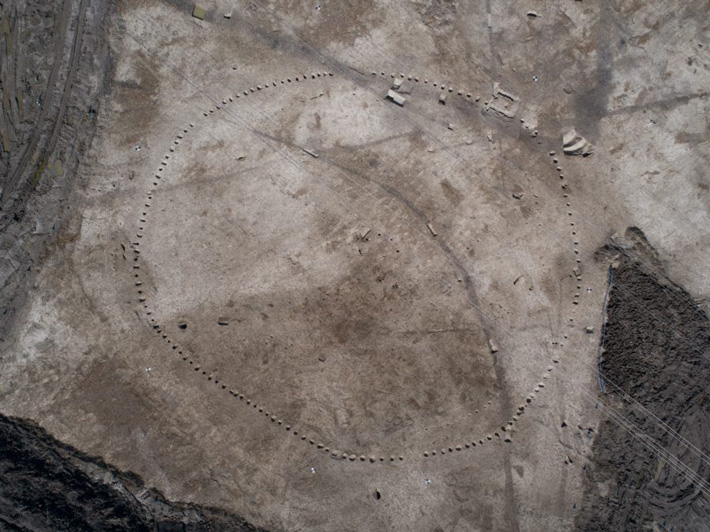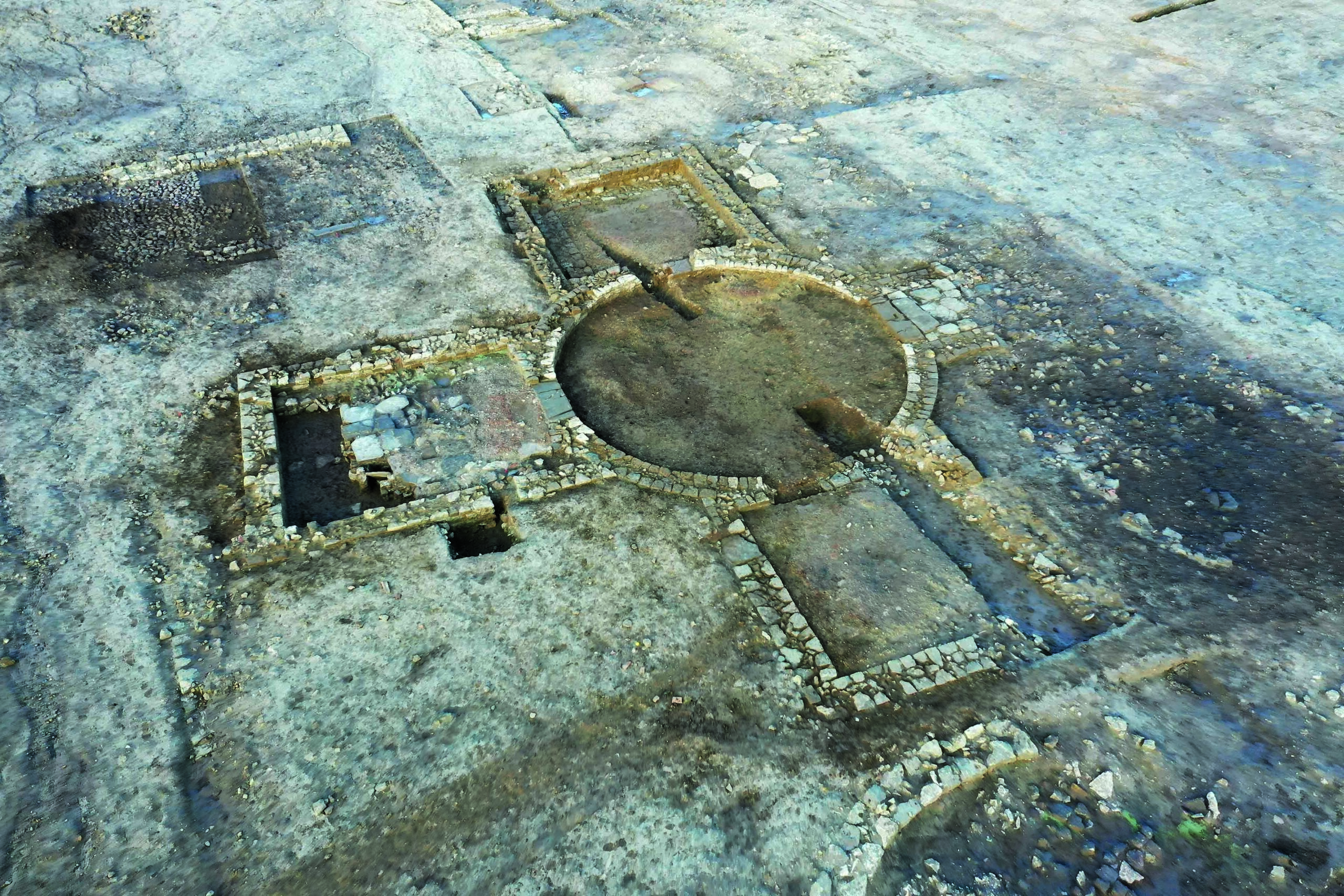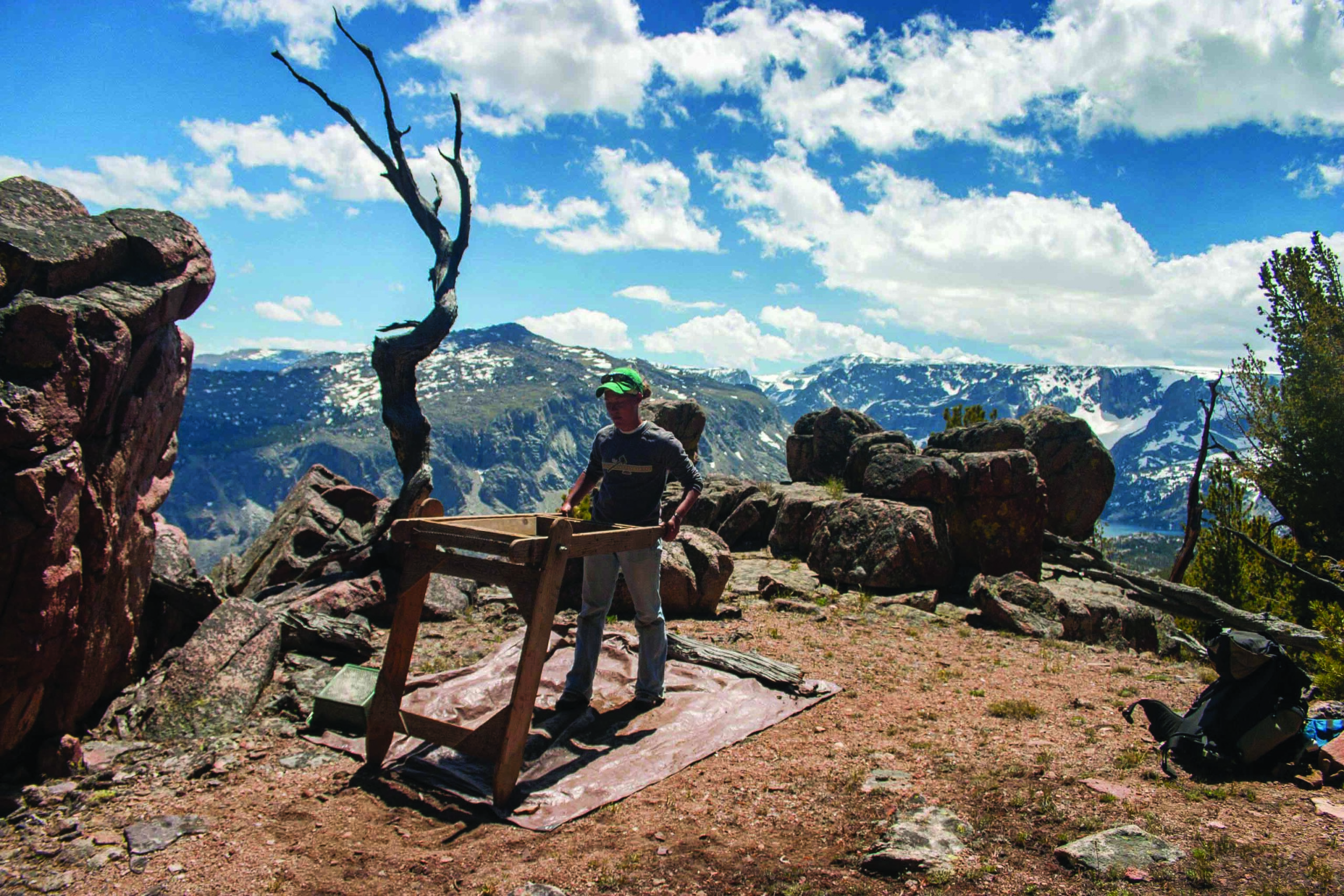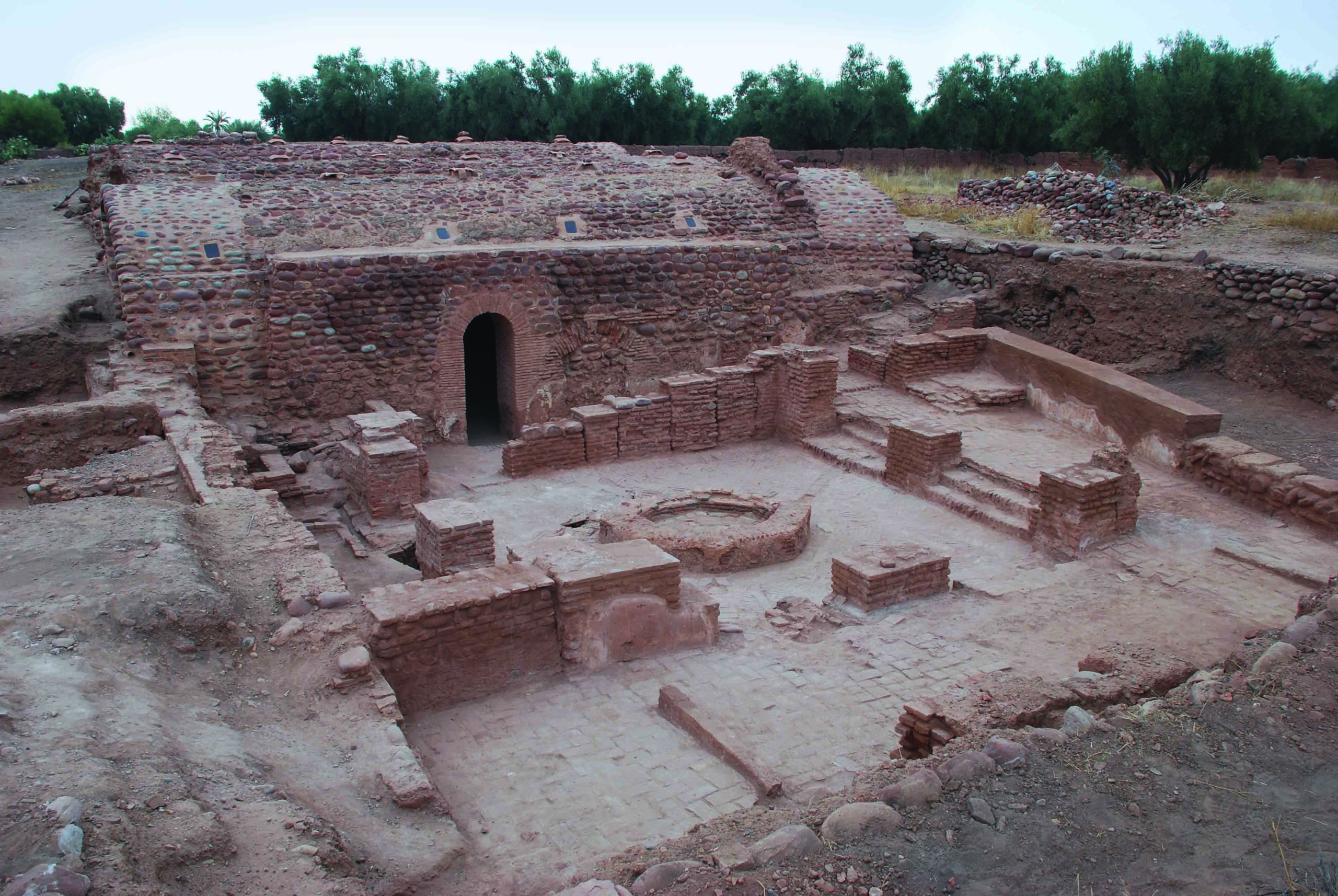
BUCKINGHAMSHIRE, ENGLAND—BBC News reports that an excavation in southeast England under the direction of archaeologist Rachel Wood, ahead of the construction of a high-speed railway line, has uncovered evidence of occupation spanning a 4,000-year period. The finds include traces of a Neolithic wooden henge whose features are aligned with the winter solstice, and the 2,000-year-old remains of a man who was buried face down with his hands bound behind his back. Wood thinks he may have been murdered. “We hope our osteologists will be able to shed more light on this potentially gruesome death,” she said. In addition to the Iron Age skeleton, the project has uncovered a gold coin dated to about 100 B.C., and a Roman-era lead coffin that also contained a skeleton. This coffin probably had a wooden outer layer, Wood added. To read about Neolithic henges and other features spanning 6,000 years of history that were unearthed during the A14 roadway project in Cambridgeshire, go to "Letter from England: Building a Road Through History."










